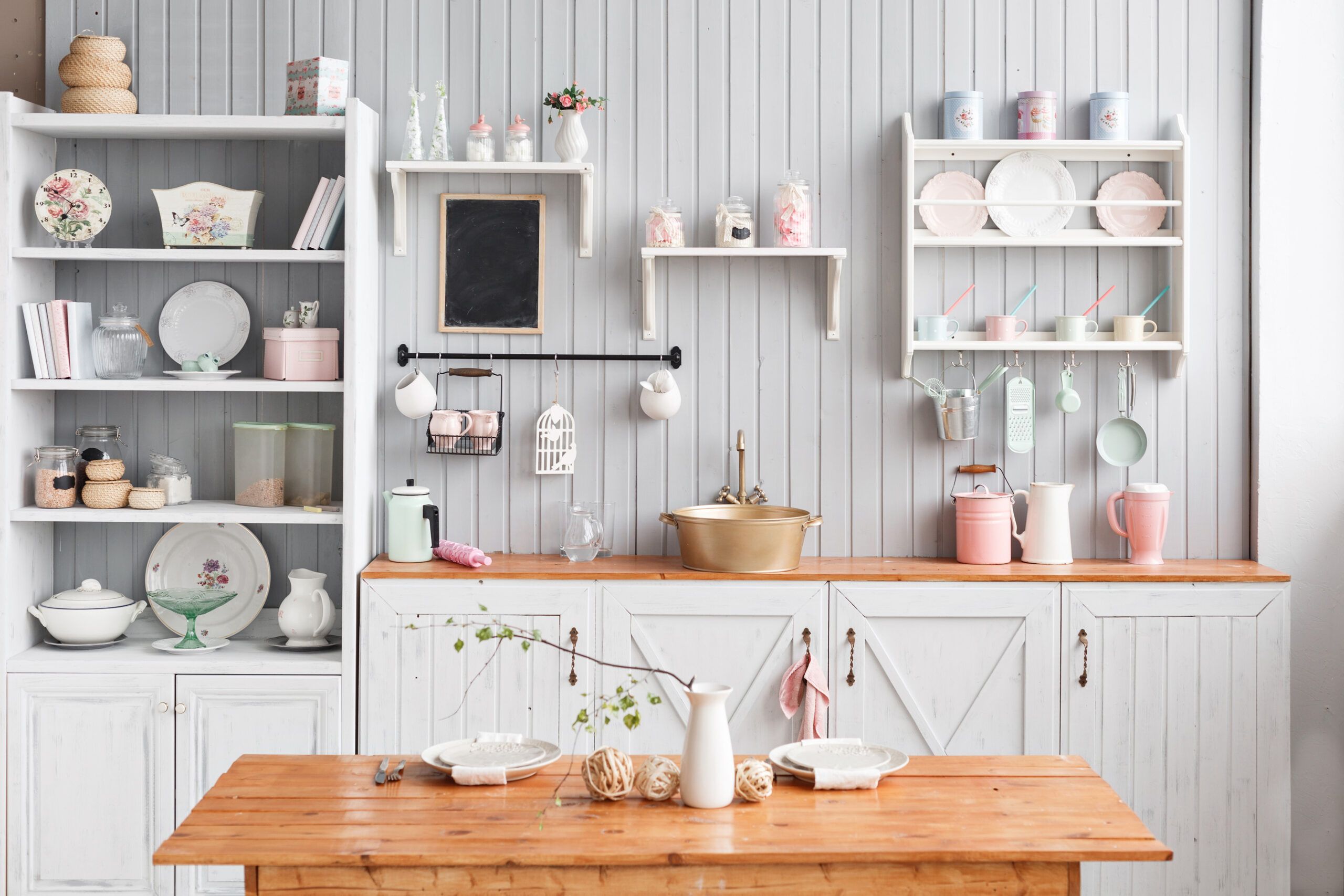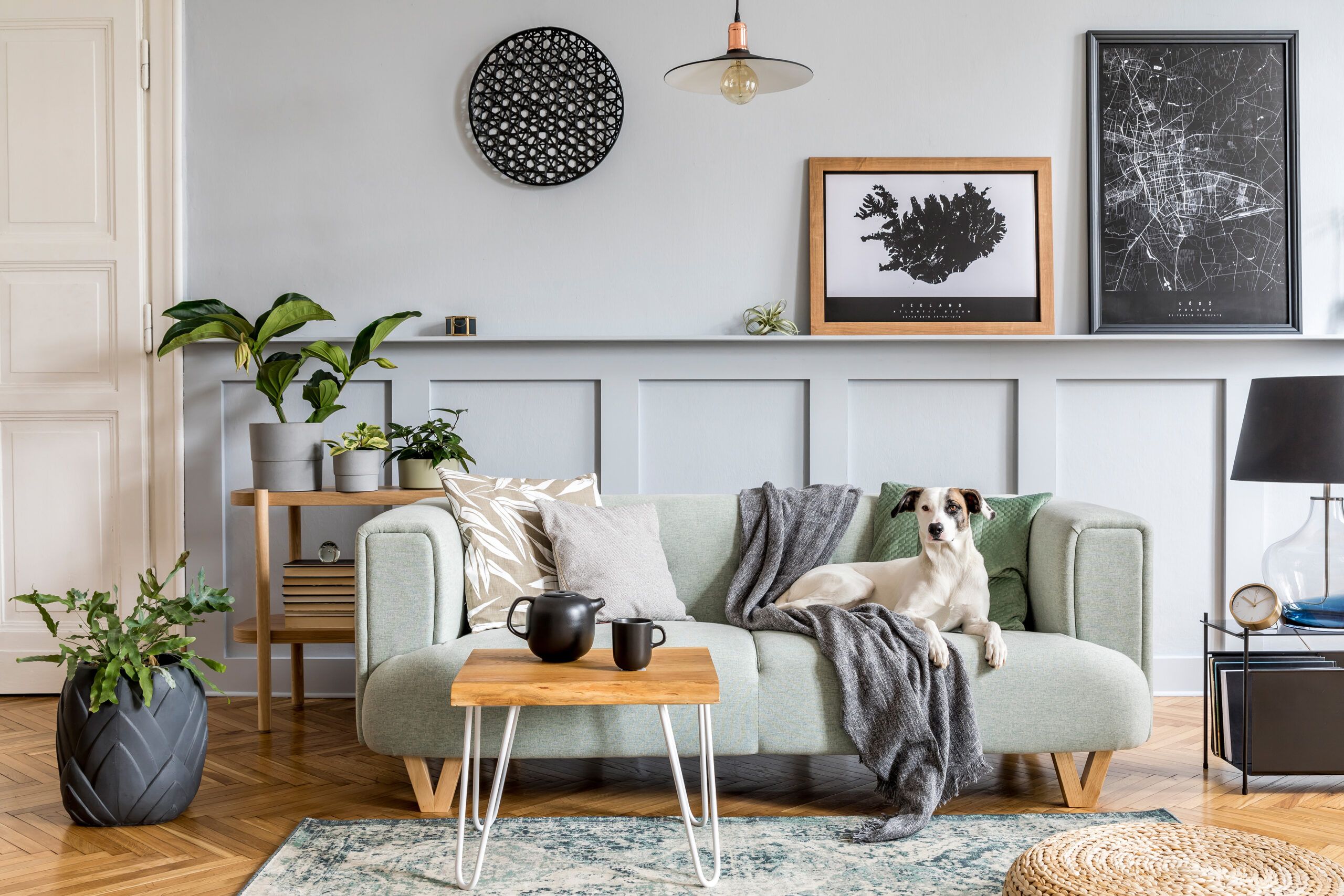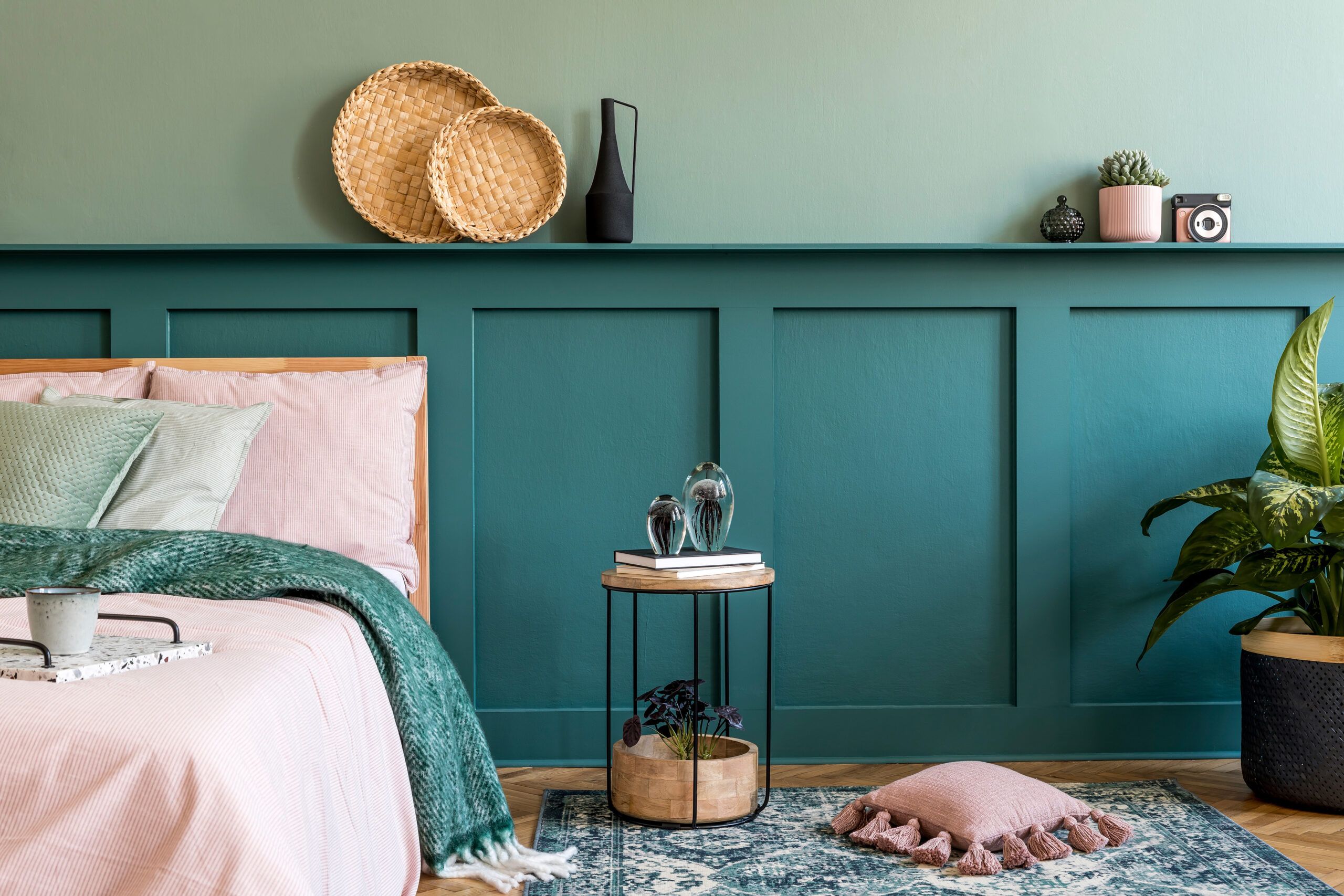Wood paneling, once the go-to for retro dens and outdated basement rec rooms, is enjoying a well-deserved revival in today’s home design. It’s not the same dark, drab material from decades past. Instead, it’s become a stylish, versatile choice that works in all kinds of modern spaces. Let’s dive into the world of wood wall paneling—updated for today’s homes. We’ll look at different styles, materials, and ways to use it, so you can decide if wood paneling’s modern makeover is right for your home.
Types of Wood Paneling in the Home
Modern wood wall paneling comes in two primary forms: sheets (or panels) and individual boards. While both can cover walls and add texture and style, they have distinct characteristics that make each a good choice for different scenarios.
Wood paneling sheets are large, thin panels typically measuring 4 feet wide by 8 feet long, with thicknesses ranging from 1/4–1/2 inch. These sheets are usually made from plywood or hardboard materials for stability. They may feature various designs on their faces, including individual flat boards with pronounced grains and knots or beadboard.
Individual boards are the more traditional type of wood paneling. These boards often feature tongue-and-groove construction, where the tongue of one board fits into the groove of the next to create a seamless, gap-free design. However, they may also come with square profiles, overlapping edges, or other design variations.
Each form has its advantages. Sheets are generally less expensive and quicker to install because they cover large areas efficiently. They also tend to have a more uniform appearance because of the way they’re manufactured. Individual boards, while more time-consuming to install and typically more expensive, give you a more authentic wood look and more flexibility in design, making them great for homeowners who prefer more customization options.
Modern Wood Paneling Designs

Modern wood wall paneling comes in a variety of styles, each lending itself to different aesthetics and design preferences. While some options may lean toward specific design styles, contemporary wood paneling is versatile and can work for a range of tastes.
Tongue and Groove
Tongue-and-groove boards are a popular choice for wood wall paneling. These boards feature a thin, tapered tongue on one edge and a corresponding groove on the opposite edge, allowing them to fit together seamlessly. This design creates a stable, gapless surface ideal for wall paneling.
Many tongue-and-groove boards come with two faces: One side is flat and bare, while the other features a beaded (shallow-grooved) profile. They’re often available unfinished, giving DIY enthusiasts the freedom to customize their look with stains or paints. Tongue-and-groove paneling adds a subtle texture that works well in both traditional and modern settings.
Beadboard
Beadboard is a classic paneling style that originated as individual tongue-and-groove boards, each about 3 to 3-and-1/2 inches wide. The defining feature of beadboard is the shallow groove or “bead” along the edges of each board. When installed, these beads create a consistent pattern of thin strips with vertical grooves.
While individual beadboards are available, many homeowners now opt for beadboard sheets, which are easier to install. Traditionally used in farmhouse-style kitchens, bathrooms, and dining rooms, beadboard is now finding its way into unconventional areas like ceilings and staircase sides. The casual yet refined look of beadboard can appeal to homeowners seeking a balance of style and comfort.
Shiplap
Shiplap has become hugely popular in recent years, particularly in modern farmhouse designs. This style features boards with rabbeted edges that overlap each other, creating small gaps between the boards. While typically installed horizontally, vertical shiplap is also trending.
Shiplap offers a clean yet rustic look that works well in various design schemes. It’s often painted but is also available in natural, unfinished varieties for those who want to customize their finish. Shiplap’s versatility makes it a favorite among homeowners and designers. Whether painted in crisp white or left in its natural state, shiplap provides a timeless look.
Board and Batten
Board-and-batten paneling, originally an exterior siding option, has found its way indoors with a more sophisticated, modern look. This style typically consists of wide boards installed vertically on the wall, with thinner boards (battens) covering the seams between the wider boards.
While traditionally associated with rustic buildings, board and batten has evolved to suit modern industrial aesthetics. It can be crafted from rough-cut wood with visible saw marks for a more rustic touch or from smooth, painted wood for a cleaner, more contemporary style. Some modern interpretations incorporate horizontal or diagonal designs for added visual interest.
Raised or Flat Panel
Raised or flat panel wall paneling is a traditional style often seen in early colonial homes. This elegant paneling treatment consists of a frame made of horizontal rails and vertical stiles with grooved or rabbeted edges. Raised or flat panels, often made from MDF in modern applications, fit into these grooves.
While versatile enough for various spaces, raised or flat panel treatments are popular in formal areas like foyers, dining rooms, and studies. They add a touch of sophistication and can be customized with different panel designs and finishes to suit various interior styles. These panels can be painted or stained to match the room’s existing decor, making them a favorite for those looking for a refined, classic presentation.
Pallet and Reclaimed Wood
A more recent trend in wall paneling involves the use of pallet wood or other reclaimed wood species. This style typically features wood strips of uniform width but varying lengths, thicknesses, and colors. When installed, these create a mismatched, textured look with depth and character.
Pallet and reclaimed wood paneling is well-suited to organic modern or boho-inspired styles. It’s often used to create striking accent walls or backsplashes that add warmth and visual interest to spaces. Due to its bold nature, it’s best used sparingly to avoid overwhelming a room. The history and uniqueness of each piece of reclaimed wood add a story and personality to the home.
Prefinished Panels
Prefinished panels or sheets offer a convenient option for those seeking a quick and easy installation. These panels are typically made from compressed wood fibers and glue or plywood and come in various patterns and finishes. They may mimic the look of individual wood planks, feature textured veneers, or come in smooth, glossy finishes.
The main advantage of prefinished panels is their ready-to-install nature, saving you time and effort in finishing. They’re available in a range of styles, including stained, primed, painted, whitewashed, and distressed looks. This type of paneling is perfect for busy homeowners who want the look of wood without the labor-intensive installation process.
How To Use Wood Paneling

Wood paneling has reemerged as a versatile and chic interior design feature. With the resurgence of natural materials and sustainable design, wood paneling can be a stylish and eco-friendly way to transform spaces. Here’s how to use it in your home to create a modern, sophisticated look.
Statement Walls
One of the most popular ways to use wood paneling in modern homes is by creating an accent or statement wall. Whether it’s a living room, bedroom, or hallway, a paneled wall adds depth and warmth to any space. By opting for lighter tones, such as white-washed or bleached wood, or darker hues for contrast, a wood-paneled accent wall can become the focal point of a room without overwhelming it.
Consider geometric patterns or vertical planks to create a sense of height and space. For a modern touch, mix wood panels with other materials like concrete or glass to balance warmth with sleek, industrial vibes.
Ceiling Treatments
Wood paneling on the ceiling is a sophisticated way to add character and texture to an otherwise overlooked surface. In modern homes, wood-paneled ceilings can create a cozier, more intimate atmosphere, especially in large open-concept spaces. Light wood tones can make a room feel airy and expansive, while dark wood can create a more dramatic, moody ambiance.
To prevent a space from feeling too heavy, pair the wood ceiling with minimalist furniture and neutral wall colors, allowing the natural grain and texture of the wood to shine without overpowering the room.
Kitchen Backsplashes
In the kitchen, wood paneling can be used in unexpected ways to add warmth to a typically functional space. Consider using wood panels as a backsplash, either on their own or combined with other materials like tile or stone. This approach softens the sleek surfaces often found in modern kitchens to create a more inviting and homey environment.
Opt for sealed, treated wood that can withstand moisture and heat, and choose a color or grain that complements your countertops and cabinetry. The result is a kitchen that feels both modern and comfortable with a unique twist on traditional materials.
Wainscoting
Wainscoting, a classic architectural feature, has been given a modern upgrade with sleek wood paneling. Instead of the ornate, Victorian-style designs, modern wainscoting features clean lines and minimalist patterns, often extending from floor to mid-wall or even full height. This technique works well in dining rooms, entryways, and bathrooms.
Pair it with simple, monochromatic wall colors to maintain a contemporary look, or add a pop of color to the upper wall for a playful contrast. Modern wainscoting can be a subtle way to incorporate wood paneling into your home without overwhelming the space.
Built-In Shelving and Niches
Wood paneling can be used to highlight built-in shelving or niches, adding a natural element to functional spaces. Whether it’s around a fireplace, in a home office, or as part of a custom bookshelf, wood-paneled backgrounds can make these areas feel more cohesive and intentional.
For a seamless look, match the wood paneling with other wood finishes in the room, such as flooring or furniture, or use contrasting colors or textures for a bold, eye-catching design.
Exterior Wood Paneling
While this article focuses on interior applications, wood paneling can also make a stunning impression on a home’s exterior. Modern wood paneling on facades is often used to complement materials like stone, steel, or glass. It can create a striking blend of natural and industrial aesthetics.
Wood cladding on exterior walls adds warmth and texture to modern architectural designs, whether used on entire walls, in combination with other materials, or to accent specific areas such as entryways or terraces.
Sustainable Choices
With the increased focus on sustainability, many homeowners are opting for reclaimed wood or eco-friendly alternatives like bamboo or sustainably sourced timber. These materials offer the same aesthetic appeal as traditional wood but with a lower environmental impact.
Reclaimed wood, with its natural patina and weathered appearance, brings a rustic charm that contrasts beautifully with sleek, modern furnishings and minimalist designs. Using wood paneling sourced from eco-friendly suppliers allows you to create a chic look while keeping sustainability at the forefront of your design choices.

